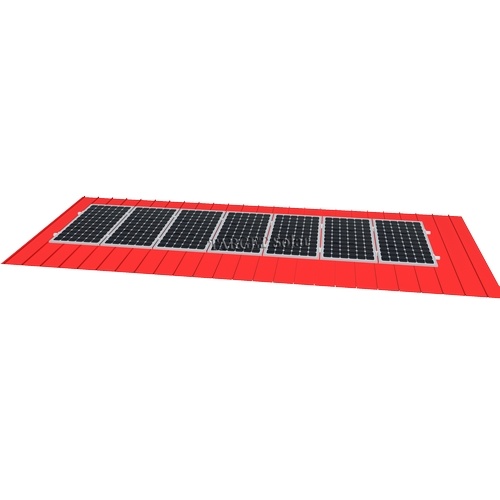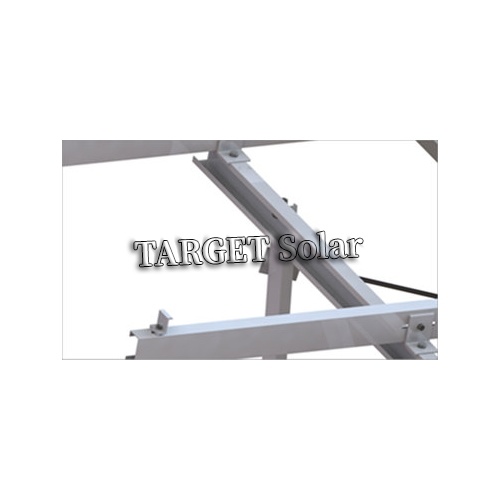Release Time: Apr 25,2025
The Importance of Stability: Cement Roof Solar Panel Supports
The Importance of Stability: Cement Roof Solar Panel Supports
Introduction to Solar Energy Systems
In an age where renewable energy is becoming increasingly essential, solar panel systems are a shining beacon of efficiency and sustainability. As homeowners and businesses alike turn to solar energy for both economic and environmental benefits, understanding the components that contribute to a successful installation is vital. One of the most critical aspects is the **stability** provided by **cement roof solar panel supports**. This article delves into the importance of these supports, the benefits they provide, and how they contribute to the overall effectiveness of solar energy systems.
What Are Cement Roof Solar Panel Supports?
Cement roof solar panel supports are specialized structures designed to anchor solar panels securely to the rooftops of buildings. Made primarily from durable cement, these supports ensure that solar panels remain firmly in place, regardless of environmental conditions. They are engineered to withstand high winds, snow loads, and other forces that can cause instability, ensuring that solar panels maintain optimal performance throughout their lifespan.
The Role of Stability in Solar Panel Efficiency
Stability is crucial in maximizing the efficiency of solar panels. When panels are securely anchored, they are less likely to experience movement that can misalign them from their optimal angle. This alignment is essential to harness the maximum amount of sunlight, as even a slight tilt can significantly reduce energy output. Therefore, the stability provided by cement roof supports not only helps protect the panels but also enhances their performance.
Benefits of Cement Roof Solar Panel Supports
Understanding the advantages of cement roof solar panel supports can help homeowners and businesses make informed decisions when investing in solar energy systems.
1. Enhanced Durability
Cement is known for its strength and longevity. When used in solar panel supports, it provides a robust foundation that can endure harsh weather conditions, including heavy rain, strong winds, and extreme temperatures. This durability translates to a longer lifespan for the solar panel system, reducing the need for frequent repairs or replacements.
2. Improved Safety
A well-anchored solar panel system is far less likely to pose a safety risk. Unstable panels can lead to accidents, such as falling debris or roof damage. By utilizing cement roof supports, homeowners and businesses can enhance the safety of their solar installations, protecting both the property and its occupants.
3. Cost-Effectiveness
While the initial investment in cement roof supports might be higher than other materials, their long-term benefits outweigh the costs. The reduced risk of damage and the extended lifespan of both the supports and the solar panels lead to significant savings over time.
4. Versatility and Adaptability
Cement roof supports can be customized to fit a variety of roof types and solar panel configurations. Whether it’s a flat roof, sloped roof, or green roof, these supports can be adapted to meet the specific needs of any installation, ensuring optimal positioning and stability.
5. Environmental Benefits
Using cement for solar panel supports aligns with sustainable practices. By ensuring that solar panels are securely installed, we can enhance their efficiency and effectiveness, leading to greater energy production and a lower carbon footprint.
Installation Process of Cement Roof Solar Panel Supports
Understanding how to properly install cement roof solar panel supports is essential for ensuring stability and effectiveness.
1. Site Assessment
Before installation, a thorough site assessment is required. This involves evaluating the roof structure, understanding load-bearing capacities, and determining the best placement for the solar panels.
2. Choosing the Right Supports
Selecting the appropriate size and type of cement supports is crucial. Factors such as the type of solar panels, local weather conditions, and roof slope should be considered to ensure optimal performance.
3. Installation Techniques
The installation process typically involves the following steps:
- Preparing the roof surface to ensure a clean installation area.
- Securing the cement supports to the roof with appropriate fasteners.
- Aligning the solar panels with the supports and securing them in place.
- Conducting a thorough check to ensure that all components are stable and secure.
4. Regular Maintenance and Inspections
Once installed, regular maintenance and inspections are essential to ensure the integrity of the supports and the solar panel system. Checking for any signs of wear, damage, or instability helps to address issues before they become significant problems.
Best Practices for Maximizing Solar Panel Stability
To ensure that your solar panel installation remains stable and effective, consider the following best practices:
1. Professional Installation
Hiring professionals with experience in solar panel installations can significantly enhance the quality and stability of the installation. They have the knowledge and tools required to ensure that supports are correctly placed and secured.
2. Regular Inspections
Conducting routine inspections helps to identify any potential issues early on. Look for cracks in the cement supports, signs of wear on the mounting hardware, or misalignment of the panels themselves.
3. Weather Preparation
In regions prone to extreme weather, additional measures might be necessary. This could include reinforcing supports or adding protective coverings to panels to further enhance their stability and longevity.
4. Compliance with Local Regulations
Ensure that your installation complies with local building codes and regulations. This helps reduce the risk of fines and ensures that the installation meets safety and stability standards.
Common Challenges and Solutions in Solar Panel Support Stability
While cement roof solar panel supports are designed for stability, several challenges may arise during their use.
1. Roof Structure Limitations
Some roofs may not have the structural integrity to support heavy cement supports. In such cases, lighter-weight materials or alternative mounting solutions may be necessary.
2. Installation Errors
Improper installation can lead to instability. Always ensure that the installation is performed by qualified professionals to minimize risks.
3. Environmental Factors
Extreme weather conditions can challenge the stability of solar panel systems. To mitigate these risks, consider using additional anchoring methods or selecting supports designed for high-wind areas.
FAQs About Cement Roof Solar Panel Supports
1. How do cement roof solar panel supports compare to other materials?
Cement supports are generally more durable and robust compared to alternatives like plastic or aluminum. They provide enhanced stability and longevity, making them a preferred choice for many installations.
2. Are cement roof supports suitable for all roof types?
Yes, cement roof supports can be customized to fit a variety of roof types, including flat, sloped, and green roofs.
3. What maintenance is required for cement solar panel supports?
Regular inspections for cracks or damage, along with periodic cleaning, are essential to maintaining the integrity of the supports.
4. Can I install solar panels on my roof without cement supports?
While it is technically possible, it is not advisable. Without proper supports, the stability and efficiency of the solar panels can be compromised.
5. How do I know if my roof can support a solar panel system?
A professional assessment is necessary to evaluate the structural integrity of your roof and determine its load-bearing capacity before installation.
Conclusion
The importance of stability in solar panel installations cannot be overstated, and cement roof solar panel supports play a pivotal role in achieving this. By providing durability, safety, and cost-effectiveness, these supports ensure that solar panels perform optimally, harnessing the sun's energy efficiently. Investing in high-quality cement supports and following best installation practices will not only enhance the longevity of your solar panel system but also contribute to a more sustainable future. As we continue to embrace renewable energy solutions, prioritizing stability through effective support systems is essential for maximizing both safety and efficiency in solar energy production.
Related News
May 07,2025
Exploring the Durability of Color Steel Tile Roof Photovoltaic Brackets: A Comprehensive Guide
May 01,2025
Understanding Ground-Mounted Photovoltaic Power Stations: A Sustainable Energy Solution
Apr 27,2025
Ground Photovoltaic Station Supports: Key Factors for Optimal Performance







